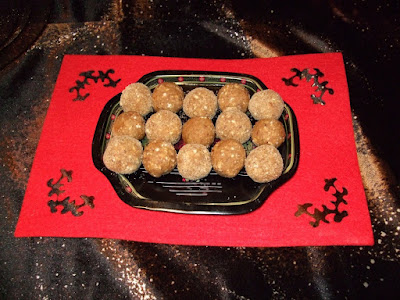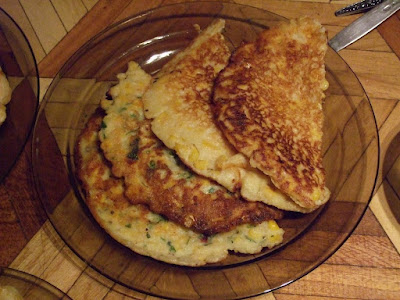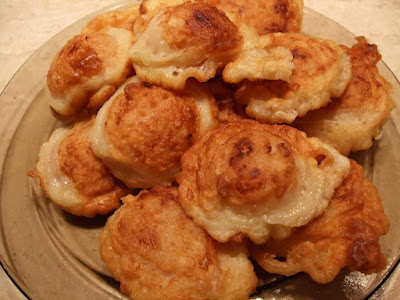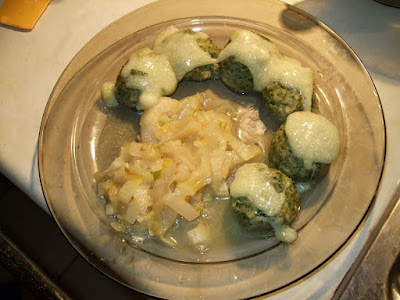Sudovian: prasan
Hausa: ge̋ṛő
Basque: artatxiki
Galician: paínzo
Bahasa Indonesia: jewawut
Pashto: غوښت
Sestwana: lebelebele
Dutch: gierst
Hungarian: köles
Millet is one of the oldest grains. Mentionend in the Bible, has been grown in India and Africa since prehistoric times and Arabs used to feed birds with millets grains. Today millet is consumed especially in Africa (by the way, if you know some original African recipes how to prepare millet, please let me know!) but worldwide people discover this old cereal again, cause it is gluten-free and easy in digestion. In Poland people prepare it on several ways, especially cooked in milk and served with cinnamon and apples or dried plums, baked with milk or cream and fruits, but sometimes cooked in broth à la risotto (since millet means proso, millet "risotto" is called prosotto) or just cooked like rice. I present you my millet Polish dumplings, kopytka z kaszy jaglanej. Brothers of Italian gnocchi, kopytka (which literally mean "little hooves") are eaten very often in Poland and also known in Belarus (named капытка). Kopytka are small potato and flour dumplings, cooked in water and often fried with breadcrumbs and butter. Potato is the main ingredient of this dish, in my recipe replaced by millet.
100 gr millet
1/2 cup milk
1 small egg
1/2 cup wheat flour + 1 tablespoon potato starch
1 teaspoon butter
salt (to taste) + a pinch of sugar
1 tablespoon breadcrumbs + 1 tablespoon butter
1. Put the millet on a sieve and pour boiled water on it. Immediately, put the sieve under cold running water and wash the grains. This step is very important to exclude the bitterness of millet
2. Combine drained millet with milk in a pyrex tray and bake for about 30 min in the oven (about 200C). Millet shpuld absorb all the milk and become a solid crackling layer
3. When millet is cool, grind it in meat grinder.
4. Combine millet cream with whisked egg, sieved flour and potato starch, butter, salt and sugar
5. Sprinkle your workplace with flour. Form a long roll, thick as thumb. Cut it in diamonds.
6. Boil broth (can be vegetable broth) or water with salt. Pour kopytka, and cook 10 min from the moment that the water boils again.
7. In a saucepan, heat butter with breadcrumbs and add cooked, drained kopytka (you can do it just before serving or even next day) and fry for a while. Each dumpling should be covered with golden breadcrumb sauce.























































